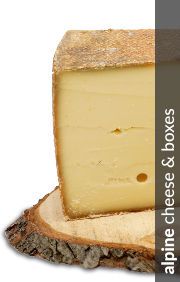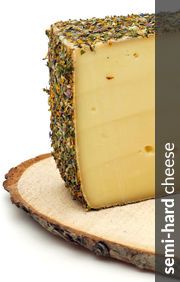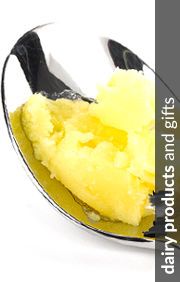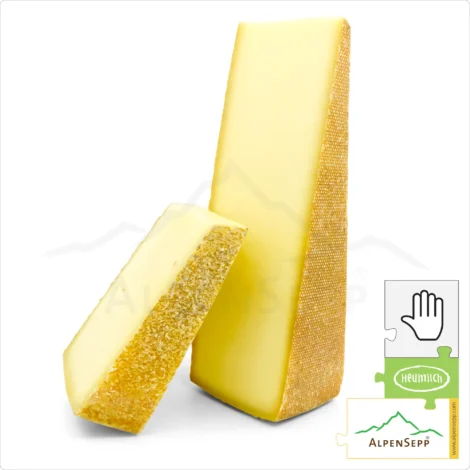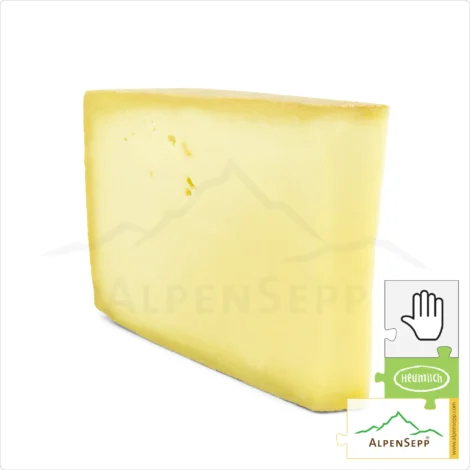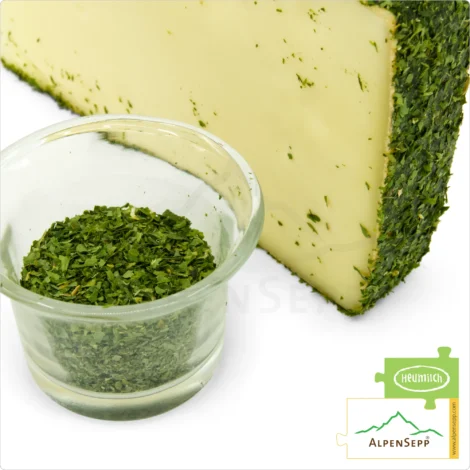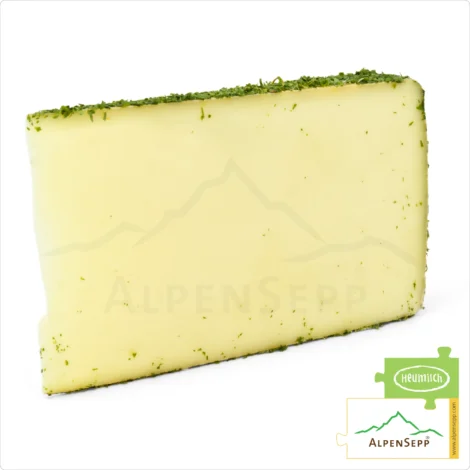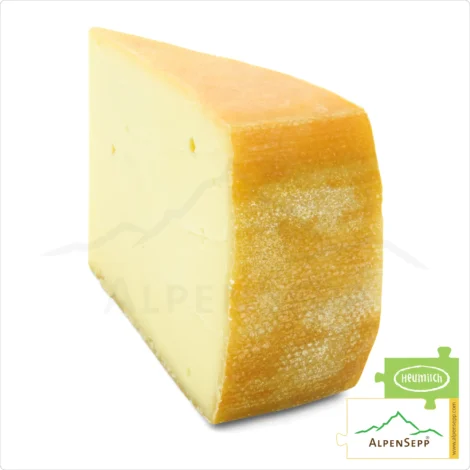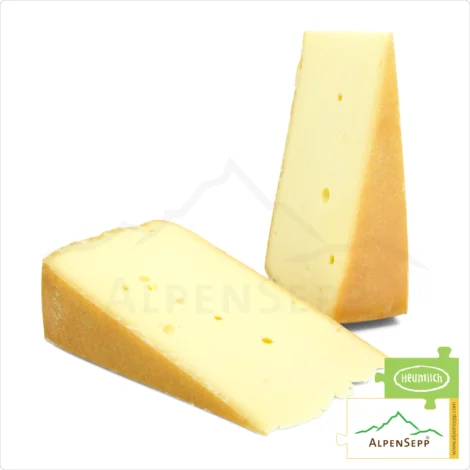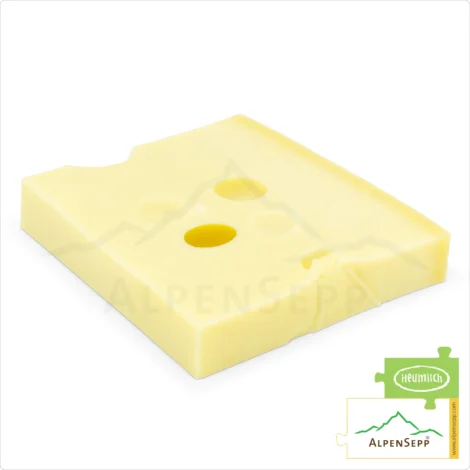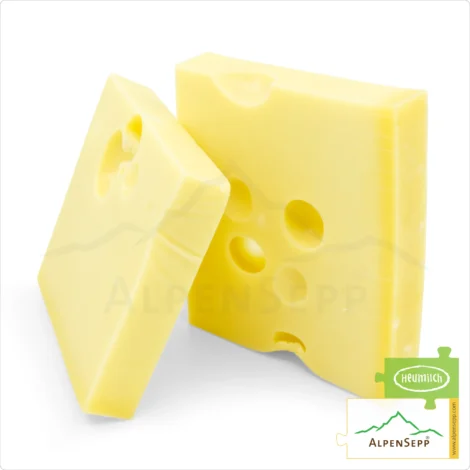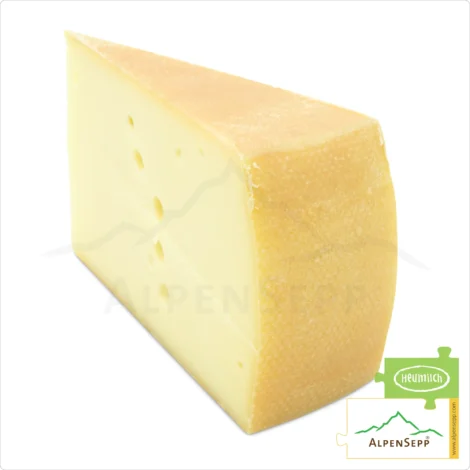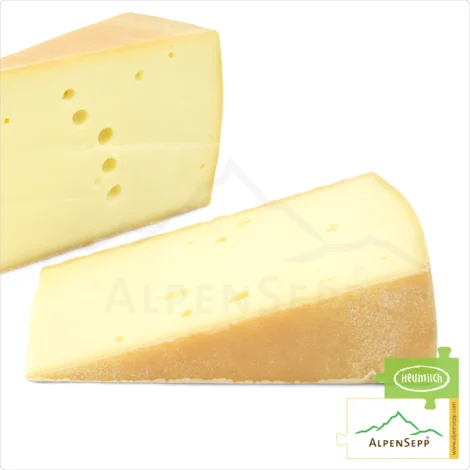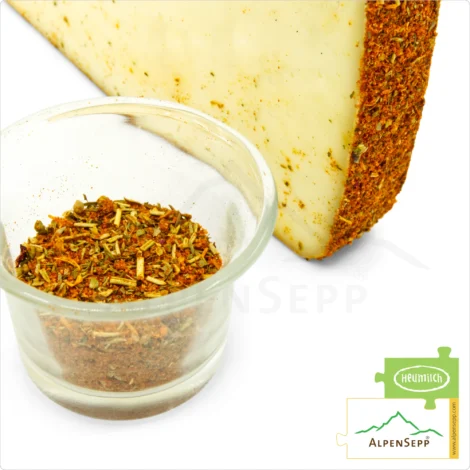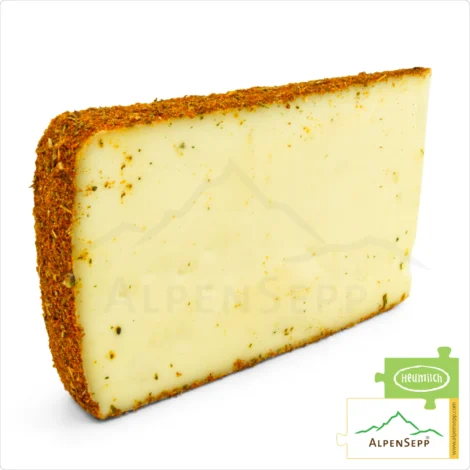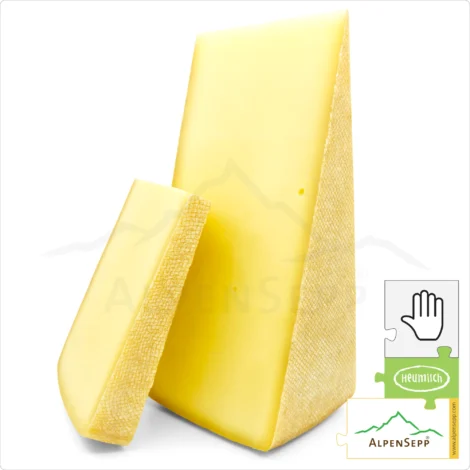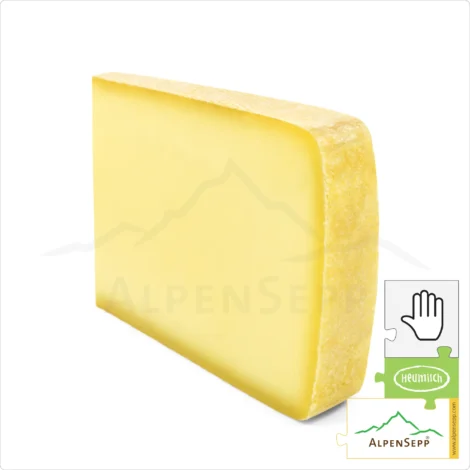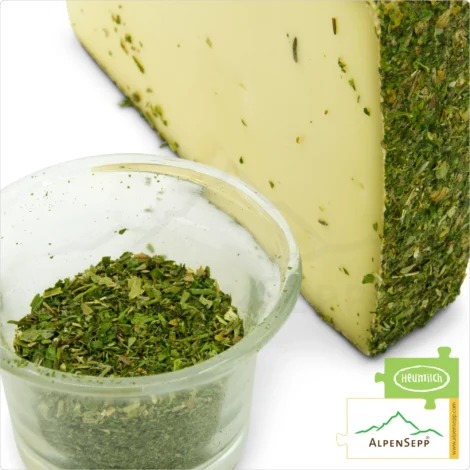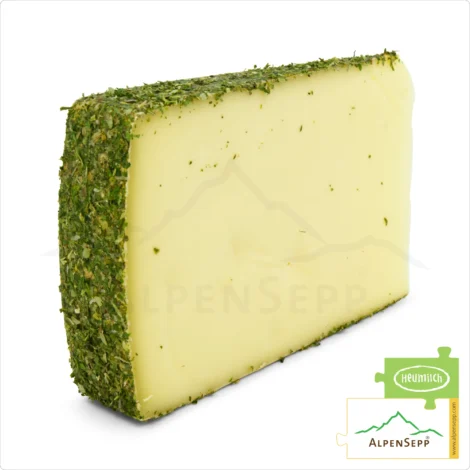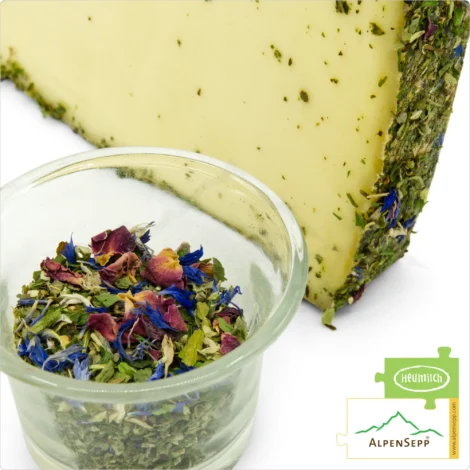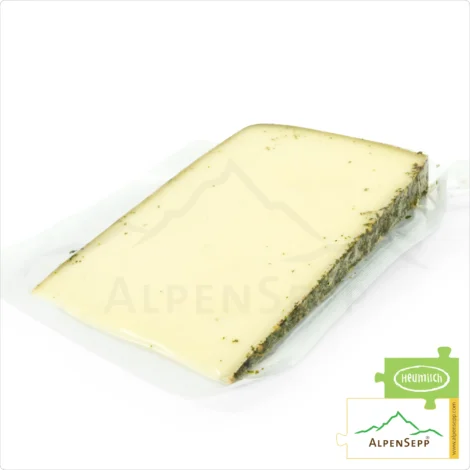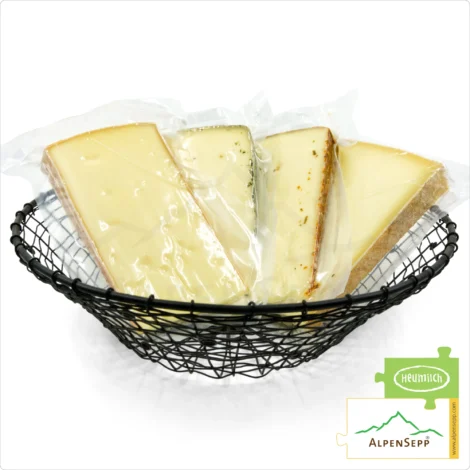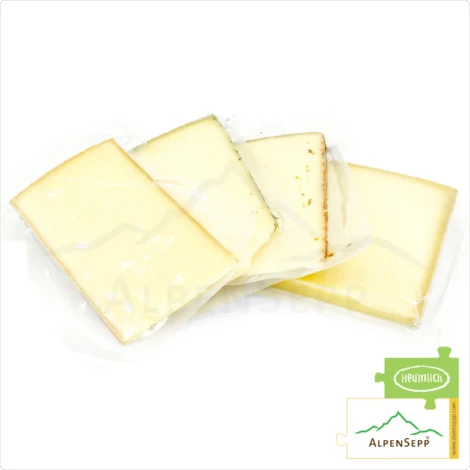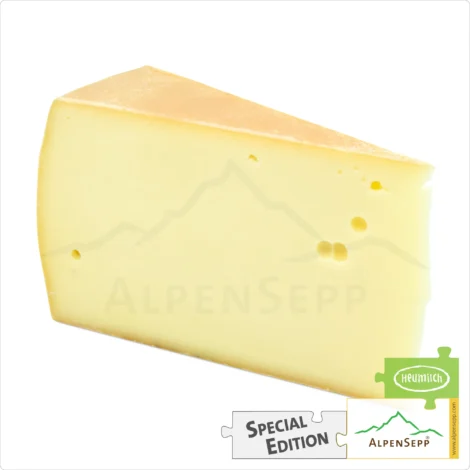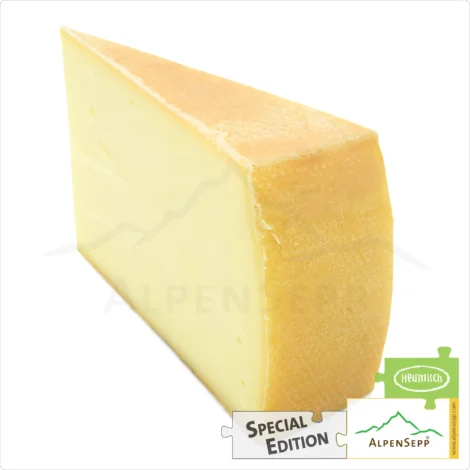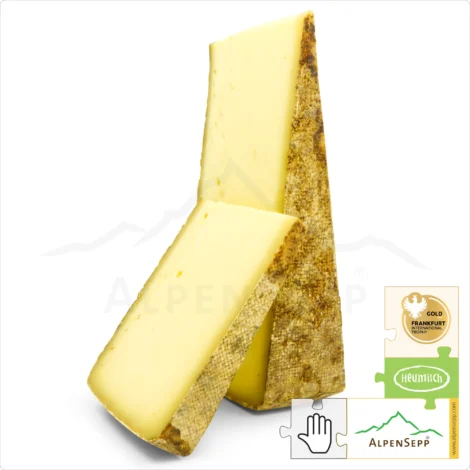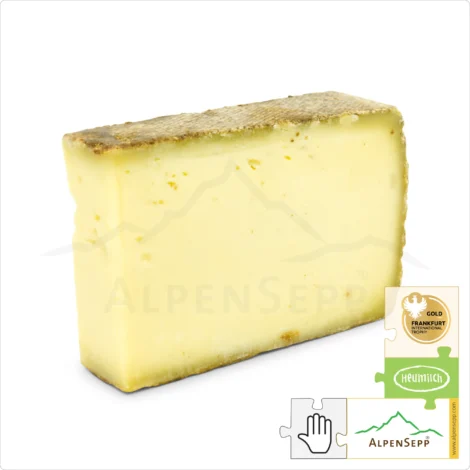Austrian Alps Cheese
Hard cheese and semi-hard cheese from the Austrian alps – our cheese varieties
In our alpine dairy different types of cheese are produced in a traditional way and from fresh hay milkHay milk comes from cows that are fed exclusively with fresh grassland feed, hay and little grain. » More info or raw milkThe cheese is made from fresh milk, which was not treated at the beginning of the cheese making process (raw milk). It is almost as it comes from the cow's udder. » More info. The cheese production process produces our various hard cheeses and semi-hard cheeses.
Here you will find a complete overview of all cheeses from our alpine dairy cellarThe alpine cheese is best located in a cellar with high humidity. » More info – such as the well-known mountain cheese, the alpine cheese, the spicy grated cheese and many other types of cheese.
Our hard cheeses and semi-hard cheeses
Hard cheese cheeses are characterized by a high dry mass. Hard cheese has the longest ripening periodThe milk period is also called the lactation period. It is the time when farm animals such as cows, sheep or goats keep milk for milk production. » More info of all cheeses – depending on the variety, it is between three months and over three years. Hard cheeses therefore have a strong taste and the aromas are very intense.
In the production of hard cheeses, the cheese milkCheese milk is the milk intended for the production of cheese, also with the concomitant use of buttermilk products, cream products, sweet whey, sour whey and whey cream (whey cream) » More info curdled with naturalHere in Austria, we call our fresh, natural milk for our cheese production hay milk (hay mild standard) - in Germany it is different. » More info rennetNatural rennet is a mixture of the enzymes chymosin and pepsin, which is obtained from the abomasum of young ruminants in milk-drinking age. » More info is broken (sliced) with the cheese harp until the individual particles of the cheese curdAs break (or cheese curd) is called in the dairy, the resulting material, which is formed from the milk by the addition of rennet or lactic acid to the milk breakage. » More info are very small (about the size of a wheat grain).
This small division allows more wheyWhey is the watery greenish-yellow liquid that results from cheese making. » More info to flow off. The curd is then heated, which explains its high dry matterThe dry matter refers to that portion of the cheese that remains after removal of the water contained. The more water is removed from the cheese, the lower its dry matter and vice versa. » More info content, and is filled into round cheese moulds, pressed, dipped in brine and stored in the ripening cellar, where certain bacteriaBacterium Linens (red culture bacteria) are brushed with salt water on the cheese. produce the final cheese.
Our hard cheeses are brushed several times with table salt (brine) during the ripening process. The salt extracts moisture from the surface. This is how the so-called cheese rindTo protect the cheese wheel, it is put into salt bath or turned into dry salt. The salt removes water from the cheese and it dries faster. So the rind is formed. » More info is formed.
Hard cheeses include, for example:
- Alpine cheese / Mountain cheese
- Cheddar
- Chester
- Comté
- Emmental
- Grana Padano
- Graviera
- Greyerzer
- Jurassic
- Kefalotiri
- Manchego
- Parmesan
- Pecorino
- Sbrinz
Semi-hard cheese Cheeses are characterized by the fact that they can be easily cut into slices and pieces. Most semi-hard cheeses mature in the cheese cellar for between four and six weeks. The cheese doughDetecting cheese defects and quality - on the cheese dough. Recognizing cheese defects requires some practice. » More info consistency is predominantly smooth to firm.
The variety of the taste of semi-hard cheeses ranges from mild to very strong, and semi-hard cheeses usually do not mature as long as hard cheeses. Due to their shorter ripening time and the larger cheese fragments, they contain considerably more water than hard cheeses.
This makes them pleasantly softer and easier to cut. Semi-hard cheese is popular for breakfast and in the evening as a cold cut with bread or as a pure companion. They can also be used very well in salads or for gratinating dishes (gratins, toasts).
Internationally known cheese representatives are:
- Appenzeller Cheeses
- Buttercheese
- Edam
- Gouda
- Kaschkawal
- Leerdammer
- Morbier
- Steppenkäse
- Subenhara
- Tilsiter
Our customers love this pleasure from the “Austrian Alps” above all else:
CHEESE
Cheese test packages
SPICY CHEESE BOX | 4 spicy lactose-free haymilk cheese varieties to discover | würzige Käsebox


